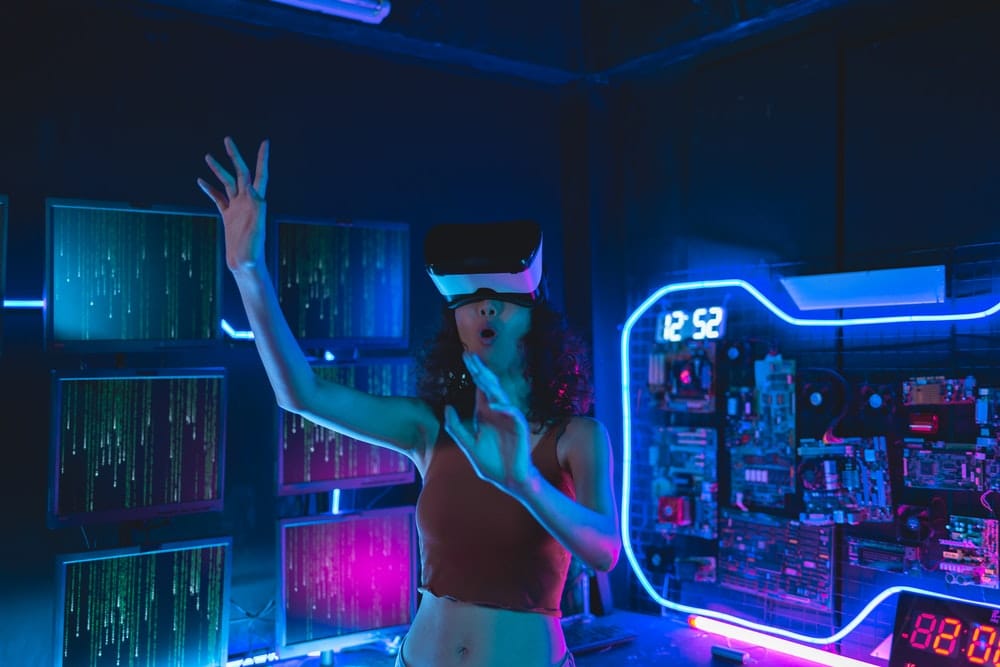In the ever-evolving landscape of medical education, technology consistently plays a pivotal role in shaping the dynamics of learning and practice. One such technology that has recently garnered attention in the medical community is virtual reality (VR). With VR, medical students and seasoned surgeons are exposed to a simulated environment, providing them with a real-world experience of surgical procedures without the risk of harming a patient.
Virtual Reality in Medical Education
Virtual reality has emerged as a powerful tool in the health care industry, particularly in the field of medical education. Through VR, students can immerse themselves in a convenient and risk-free environment, enabling them to practice and hone their skills without the fear of making fatal errors.
Avez-vous vu cela : How Are Advanced AI Algorithms Impacting Fraud Detection in Financial Transactions?
According to several scholarly articles and studies published on Pubmed, virtual reality in medical education is a trend that is rapidly gaining traction. By simulating real-world clinical situations, VR helps students gain confidence and acquire necessary skills in a controlled environment.
Medical students are finding these VR simulations highly useful. Rather than observing a surgical procedure from a distance, VR places the students right in the middle of the action. They can observe the surgery from the surgeon’s perspective, getting a close-up view of the procedure and understanding the intricacies involved.
En parallèle : Boost your visibility on TikTok, YouTube shorts, and Instagram
The Role of VR in Surgical Training
Surgical training is complex and requires a great deal of precision and time. The traditional method of ‘see one, do one, teach one’ is no longer sufficient in today’s advanced healthcare system. Therefore, the use of virtual reality in surgical training represents an innovative approach that addresses these limitations.
VR surgical simulations offer an interactive and user-friendly platform for trainees to learn, practice, and repeat procedures until they attain proficiency. With the ability to simulate any surgical scenario, VR allows surgeons to practice rare and complex surgeries, thus preparing them for any challenges they might encounter in the real world.
Studies have shown that surgeons who train using VR technology demonstrate improved performance in the operating room. By practicing on virtual patients, they can make mistakes and learn from them without causing harm or discomfort to a real patient.
Enhancement of Learning with Virtual Reality
Virtual reality provides an engaging learning environment that enhances retention and comprehension. The old adage of ‘practice makes perfect’ is particularly valid in the field of medicine. The more a student can practice a procedure, the better they will perform it in a real-world situation.
VR technology offers a gamified learning approach, which makes the learning process more enjoyable and less monotonous. Additionally, virtual reality enables self-directed learning, allowing students to learn at their own pace.
This immersive learning environment, where theoretical knowledge is applied in a simulated practical setting, not only speeds up the learning process but also ensures that students are well-equipped to handle real-life scenarios.
Virtual Reality vs. Traditional Surgical Training
Traditional surgical training has been, for many decades, the cornerstone of teaching surgery to students. However, the advent of virtual reality technology has disrupted this traditional approach, providing an alternative that offers myriad benefits.
Traditional methods involve practicing on cadavers or live patients under supervision. However, this approach has several limitations. For instance, the availability of cadavers is a major concern, and the ethical implications of practicing on live patients cannot be overlooked.
On the other hand, VR provides a risk-free, flexible, and ethical alternative for surgical training. It overcomes the limitations of traditional methods and provides a platform that can be tailored to meet individual learning needs.
In a nutshell, the integration of virtual reality in medical education, especially in surgical training, is a game-changer. VR not only enhances the learning experience but also prepares students for the challenging world of surgery. The ultimate goal is to develop proficient surgeons who can deliver high-quality patient care, and VR seems to be taking us closer to that goal. However, it’s important to note that in as much as VR is a robust tool, it cannot replace the role of human mentors and real-life experience. It should be used as a complement to traditional learning methods, not a replacement.
The Technological Impact of Virtual Reality on Medical Training
Advancements in virtual reality have notably made a significant impact on various sectors, and the realm of medical training is no exception. Medical education has been notably transformed by VR’s capabilities, broadening the boundaries of practical learning for medical students and seasoned professionals.
As observed in multiple scholarly articles and studies available on Pubmed and Google Scholar, virtual reality’s influence in medical education is growing exponentially. Traditional methods of medical teaching are being reformulated and augmented with this cutting-edge technology.
The impact of VR is particularly noticeable in surgical training. The complexity and precision required in surgery make it a challenging field. New surgeons are often under immense pressure, as any errors can lead to serious consequences. VR offers a solution to this issue by providing an opportunity for risk-free practice.
Virtual reality in surgical education enables trainees to learn, practice, and master surgical procedures before ever stepping into an operating room. VR simulations replicate the high-stakes environment of surgery, enhancing the training experience by allowing mistakes in a consequence-free setting. This ability to practice in real-time, without jeopardizing patient safety, is a revolutionary step in surgical education.
Moreover, the use of augmented reality in conjunction with VR can further enhance the learning experience. AR can overlay digital information onto the physical world, adding another layer of interactive learning. This combination of technologies provides an immersive, comprehensive training tool for prospective surgeons.
Conclusion: The Future of Virtual Reality in Medical Education
The integration of virtual reality into medical training marks a significant shift in the way future doctors and surgeons will acquire their skills. The potential of VR to revolutionize medical education is immense, and its impact is already evident in the improved surgical performance of those who have trained using this technology.
Despite the many advantages of VR, it’s crucial to remember that it should serve as a complement to traditional education methods, not replacement. Human mentors are invaluable in providing guidance, feedback, and emotional support – elements that technology cannot replicate. Additionally, while VR simulations provide opportunities for practice, they cannot emulate the unpredictability and variability of real-world scenarios.
However, the advancement of VR technology does signify a bright future for medical education. As VR continues to evolve and improve, the line between virtual and real-world surgical training will continue to blur. The application of virtual reality in surgical education is undoubtedly a significant stride towards developing confident, competent, and skilled medical professionals.
In essence, virtual reality in medical training is more than just a technological novelty. It’s a game-changing tool, shaping the future of medical education and bringing us closer to achieving the ultimate goal of patient safety and high-quality medical care. It’s an exciting era for medical students, educators, and patients, as we navigate this new landscape of learning and practice together.






